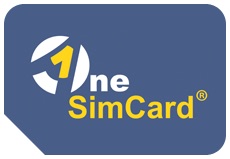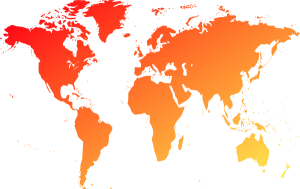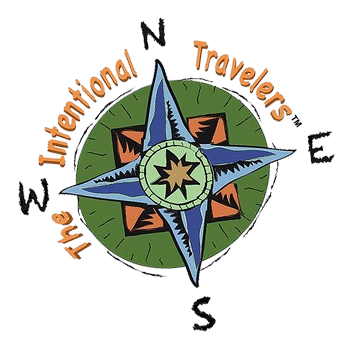
Keeping up with options for cellular international calling requires constant attention to services and available plan options. U.S. based cell service is usually a costly option when traveling outside of America and, from experience, we’ve found it is often not the most reliable option*. Before you leave on a trip, contact your carrier to find out what your options are and the potential costs, but you also need to apply a bit of skepticism to what they tell you.
One tip before you go. If you plan on using your current service, stop by a store and check to make sure you have the most current sim card installed. As cell service changes around the world often to remain widely compatible companies have to constantly upgrade their sims. Using your phone in the United States usually isn’t a problem but it can be overseas.
If you are going to be traveling internationally from the United States and are looking to make calls or use data there are five main categories of available service you need to be aware of and issues with each one:
1. The First is economy carriers which offer low monthly fees and often a number of data and messaging options. They include Straight Talk, Citizens, Cricket and others. These services generally provide no international roaming service.
2. Next are prepaid phone plans with many of these services being offered by major American carriers like Verizon along with additional economy carriers who also offer prepaid phones. Again most do not provide any international roaming.

3. The third option is to sign up for an international cellular company. Most of these are focused primarily on providing service for international roaming with little economy in the U.S. market. Using a GSM SIM card they are usually based in a foreign country and often provide their service on a foreign registered phone number. Common countries registering these services being England and Lithuania. Several offer the option of subscribing to an additional phone number based in your home country. These include Cellular Abroad also marketed as National Geographic, One Sim Card, Holiday Europe and more. A search for “international sim prepaid” will usually provide a dozen or more options.
4. The most convenient option is using one of the major U.S. based cellular companies that include, AT&T, T-Mobile, Sprint and Verizon. All of those companies provide international roaming options but you still need to know what each has as options and what potential issues there might be.

5. Pick up a cellular service when you reach your destination. Many foreign cellular companies offer short term service and all that’s necessary is to install their sim card in your phone. Many, like Vodafone maintain shops at international airports. They offer a Data SIM for Visitors in Europe designed for data services, with 10GB valid for 30 days from activation. Average cost in Europe is US$10 and it allows unlimited calls inside their regional networks.
Selecting An International Cellular Company
If your primary cell service is on of the discount companies or a prepaid phone and you’re going to travel internationally consider an international sim card service.
There are over a dozen services that operate out of different countries. All require you to set up an account and pre-load money to use the phone. Receiving calls can be expensive for people calling you as they are calling you on an international exchange. A few offer an extra cost U.S. based area code where you are charged the extra costs.
Pros –
- No long term contracts
- Sign up and pay as you go
- Access to 4G Data
Cons –
- Can requires people to call you internationally
- Limits on available carriers in each country
- Some have multi-step calling requirements
Comparing two popular international calling services
One Sim Card Service – $30 Includes a $10 Call Credit
- Data – $0.20/MB 4G
- Direct Dial Calls – In FREE, Out 49¢
- Text – In FREE, Out $0.25 each
World Travel SIM card – $50 Includes a $30 Call Credit
Data – $0.25/MB 4G
Direct Dial Calls – In FREE, Out 55¢
Text – In FREE, Out $0.25 each
Hybrid Calling Arrangements
There are a growing number of clever services that you can use if you need the ability to have long phone calls or use a lot of data.

Depending on where you are traveling and for how long, one option to consider using is a dual-SIM phone with and buying a local sim card. one of the American major cellular contracts and in addition install a prepaid service like One Sim Card which provides an app for VOIP when you have wifi service available.
Another option if you will frequently have good wifi or inexpensive data available is a VOIP phone service like MagicJack that also provides a VOIP app for your cell phone. This can provide unlimited international telephone calling service.
Getting Into The Details Of The Technology
Understanding CDMA, GSM and LTE
Thinking about phones and cellular services for your next international trip? You should have a passing knowledge of how the services evolved around the world in order to understand what choices are available.
GSM and CDMA are network technologies for cellphones. They were both developed in the nineties to take advantage of 2G network service. While most of the world selected GSM, the American FCC decided on a “dual-system” approach allowing either GSM or CDMA. Today the United States still uses that mix of different technologies while most of the rest of the world uses GSM. That’s why GSM is the preferred technology for international travel.
With the introduction of 3G, American carriers just improved the original GSM and CDMA technologies. Because of the reliance on CDMA by some American companies, the switch would have been complicated with massive expenditures.
Things improved with the introduction of 4G, a completely new cellular system for connectivity integrating LTE. Designed for data it worked better than previous technology and carriers began replacing everything else with the LTE system. LTE opened up VoIP (voice over internet) capability to replace traditional cellular voice calling. LTE has allowed many CDMA companies to operate with more cellphone equipment options and broaden their service. The remaining CDMA companies include Verizon, Sprint, US Cellular, Boost Mobile, C Spire, Ting and Virgin Mobile with AT&T and T-Mobile being the two major GSM carriers.
Early on, when the cellular networks rushed to make the switch, many phone manufacturers continued to use LTE only for data and continue to focus on GSM or CDMA for voice and texts. Today two major companies, Verizon and Sprint are now on LTE. Improving VoLTE (voice LTE) solved the voice over CDMA problem allowing phasing out 3G and greatly improving their customers use when traveling internationally.
Unfortunately, the four major carriers now provide LTE on different frequency bands and provide phones that are specific to their frequencies, making it difficult to switch. Around the world there are currently some 40 additional frequencies being used that need to be considered.
So now in selecting a service or even an unlocked phone you need to investigate compatibility with LTE networks. That’s because LTE is an umbrella term with many different frequencies. In the U.S., Sprint uses LTE (TD-LTE), a version of LTE with relatively low compatibility while T-Mobile, Verizon, and AT&T all have LTE bands of their own.
Fortunately many phone manufacturers are now making phones that support CDMA, GSM along with LTE on many bands. That’s why phones now list information on bands and frequencies. In the United States you will find carriers listing these bands and frequencies also:
Carrier 4G LTE Bands 4G LTE Frequencies
AT&T 2, 4, 12, 17 1900, 1700 abcdef, 700 bc
Verizon 2, 4, 13 1900, 1700 f, 700 c
T-Mobile 2, 4, 12 1900, 1700 def, 700 a
So if you are considering buying an unlocked phone pay attention to supported bands and frequencies. Also Switching GSM phones between different networks is easier than with CDMA phones, because all GSM phones use removable SIM cards.
Verizon and Sprint in the United States use a technology called CDMA (Code Division Multiple Access). Most other carriers and the world use what’s called GSM (Global System for Mobile Communication). There are phones on Verizon and Sprint that also support GSM, but those that don’t won’t work as world phones.

International Service Options From The U.S. Major Cellular Companies
Verizon
Your first option on Verizon is their TravelPass plan, which gives you the option to take your regular talk, text, and data with you on your trip (meaning, you use whatever amount of talk, text and data speeds you regularly use within the United States).
You will be charged $5 a day per line for days you use your service in Mexico and Canada and a rate of $10 per day for 130 additional countries. Most popular countries are included in this list, such as Argentina, Australia, Chile, France, the Netherlands, South Africa, the United Kingdom, and more.
Activating your TravelPass is required through Verizon Wireless and when you use your phone in an international location, your phone will automatically recognize where you are and will connect and your TravelPass kicks in for 24 hours. and it won’t renew or use another pass until 24 hours. Using your phone after that starts another 24 hour cycle.
T-Mobile
T-Mobile is a great option for international travel because their plans make things real simple.
The T-Mobile One plan for unlimited data lets you keep your unlimited data and texting when you travel to 210 locations and countries. However, they cap your data at 128 kbps throttled down to 2G or 3G speeds. They also charge for international phone calls, usually at 20¢ or 25¢ per minute. Often you can use a VOIP app to make calls on the data service.
T-Mobile also offers International Passes for faster data while you’re traveling abroad. Their 5 GB pass keeps you on a 4G network for 10 days also with unlimited calling at a cost of $35. They also have an option for 15 GB for 30 full days at $50.
AT&T
On both the Unlimited & More and the Unlimited & More Premium plans on AT&T, you will be able to travel to Mexico and Canada with all of your talk, data, and text already paid for. Their Mobile Share Plus plans allow you to use your talk, text, and data when you are in Mexico.
In 100+ other countries, AT&T offers an International Day Pass for $10 a day (based on 24 hours from start time), offering the unlimited talk, text, and data already in your regular plan.
There’s also the Passport plan that costs $60 for 30 days and offers 1 GB of data and unlimited texting. You can raise this to 3 GB of data for $120 for the month. At that point, you should never go any further if you value your budget, because they charge you $50 for every GB over the 3 GB limit. Phone calls are not included and you will be charged 35¢ per minute.
Sprint
You can add Sprint Global Roaming to your regular plan and it can remain on your account for free for as long as you want to keep this add-on. By enabling this feature, you can travel to 185 locations with coverage for text and data included. This is only on 2G speeds, though and it also doesn’t include voice calling which are charged at 20¢ a minute.
For faster speeds with the Global Roaming add-on, you can pay for a High-Speed Data Roaming Pass for 24 hours or a full week. The price will vary based on where you are traveling. In Canada and Mexico, a day pass will be $2 or a weekly pass will cost $10. Most other destinations will cost you $5 a day or $25 for a week.
You can also look at specific plans available in other countries like Sim2Roam in Australia a prepaid SIM Card with 28 Days Unlimited Calls, texts and 25GB of Data.
*Twice when traveling internationally we’ve run into serious issues using our providers international plans. Once while we were with Verizon we didn’t discover that the service wasn’t working at all until we got to England. On returning home Verizon refunded our money and blamed the problem on a sim that should have been upgraded. The second was with T-Mobile where our phone worked in Greece but not in Spain. They also blamed the problem on changes in Europe that needed us to get a newer sim card.

